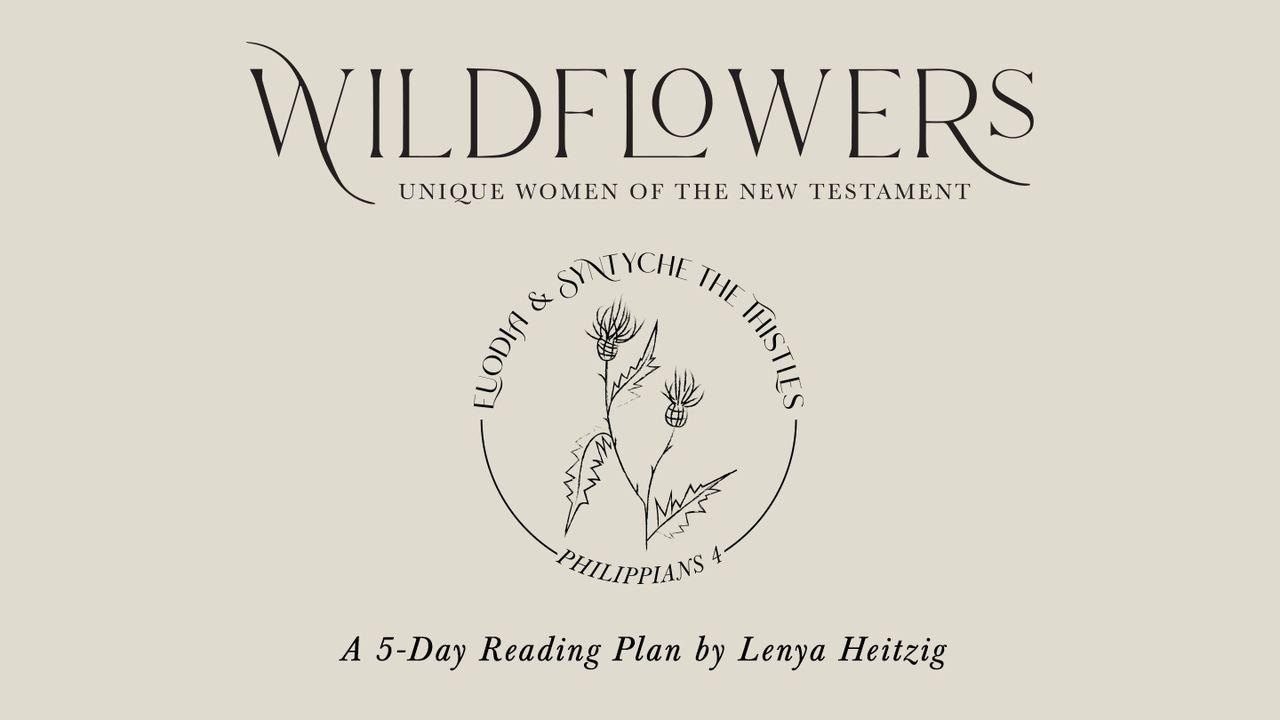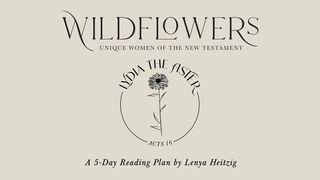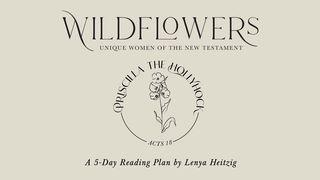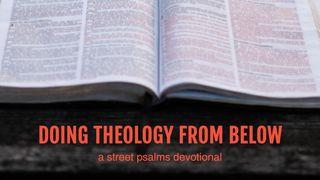Plan info
Wildflowers: Week Two | Euodia & Syntyche the ThistlesSample

Hearts and Minds
Being half red and half blue, thistles are most often the color purple. It's fun to imagine that Euodia and Syntyche together would make something unique. Sure they had their own identities but blending would be beautiful. Psychologists and experts study the effect of color on people. One recognized color expert said that "purple both calms and stimulates our bodies, putting us in the right place for introspection and focused insight. It fosters creativity by awakening our senses while promoting the quiet necessary to make intuitive, insightful observations. Purple creates a harmonious balance of awareness and peace."
Perhaps Euodia tended toward a red-hot temper and Syntyche suffered from the blues. But together they created harmony like the color purple represents. Jesus is the binding agent. Peace is not the absence of trouble but the presence of the Lord. Jesus promised, "Peace I leave with you; my peace I give you. I do not give to you as the world gives. Do not let your hearts be troubled and do not be afraid" (John 14:27, NIV).
Shepherds will tell you there is nothing that settles a flock more than the presence of a shepherd. Skittish, anxiety ridden, squabbling sheep will find rest and peace as long as the shepherd is in the field. What is true among sheep is also true among God's people. When the Great Shepherd is in our midst, division is set aside and unity is restored. Is there turmoil in your heart? Are there people who cause distress in your life? Won't you run to Jesus to find peace that is indescribable?
Read the verse below and answer the following questions:
"And the peace of God, which surpasses all understanding, will guard your hearts and minds through Christ Jesus" (Philippians 4:7).
Practical Observation
1\. Where did Paul say peace can be found?
Peace of God is different from peace with God. You cannot have peace with God by human effort. We find peace with God at salvation when we cease being His enemy and become His own dear children. The peace of God is a free will choice to receive the gift of peace that only God can give. It comes when we trust what Jesus has done in us and for us.
2\. How is this peace different from any peace the world has to offer?
3\. What part of you will God's peace impact?
4\. What word describes how this peace works?
Guard means what you think it means: to protect. When Paul said that God's peace would guard your heart and mind, he meant that it would protect you from thoughts from the Evil One and your own fallen nature. God's peace is the garrison around your heart and mind.
5\. Who is the vehicle to ensure this peace?
Personal Application
a. How does the world's definition of peace differ from the Bible's?
b. Paul taught about a peace that "surpasses all understanding." Have you experienced this kind of peace? Journal about a situation when you felt that peace.
c. Paul said that God's peace can guard your heart and mind. Why do you think these two battlefields are mentioned? How do you think the mind and the heart work in tandem?
> Thistle
> Thistle fierce and wild
> Strong you grow
> And spiky
> What vital power
> Too sharp to grasp
> Roots buried deep
> No soil to see
> From patio and wall
> You thrust
> I must
> In truth
> Honour
> Your mighty conquest
> —Janey Colbourne
How to Grow a Thistle
Thistles are usually purple and grow between thirty-one to seventy-nine inches tall. Most of the foliage is covered with sharp spines, which protect them from herbivores. Most plants produce one or two flowers. They are hardy plants that grow well in fields, prairies, and forest edges.
• Light: Full sun
• Soil: Grows in any type of soil
• Spacing: Twenty-four to thirty-six inches and one-fourth to half an inch deep
• Planting: Best during late spring to midsummer
Scripture
About this Plan

In this four-part devotional, Lenya Heitzig pairs women of the New Testament with the wildflowers they represent. Like the thistle, there are two sides to Euodia and Syntyche: one admirable and inviting, the other prickl...
More
Related plans

Wildflowers: Lydia the Aster

Wildflowers Week Four | Priscilla the Hollyhock

Now Streaming Week 5: Stranger Things

Daily Bible Reading – August 2021: God’s Word of Promise

From Bethlehem to Moab, and Back Again: 5 Day Bible Plan

The Other Five Prayer Journey

Our Daily Bread: Remembering 9/11

Now Streaming Week 7: The Last Dance

Strong Disciples Two
